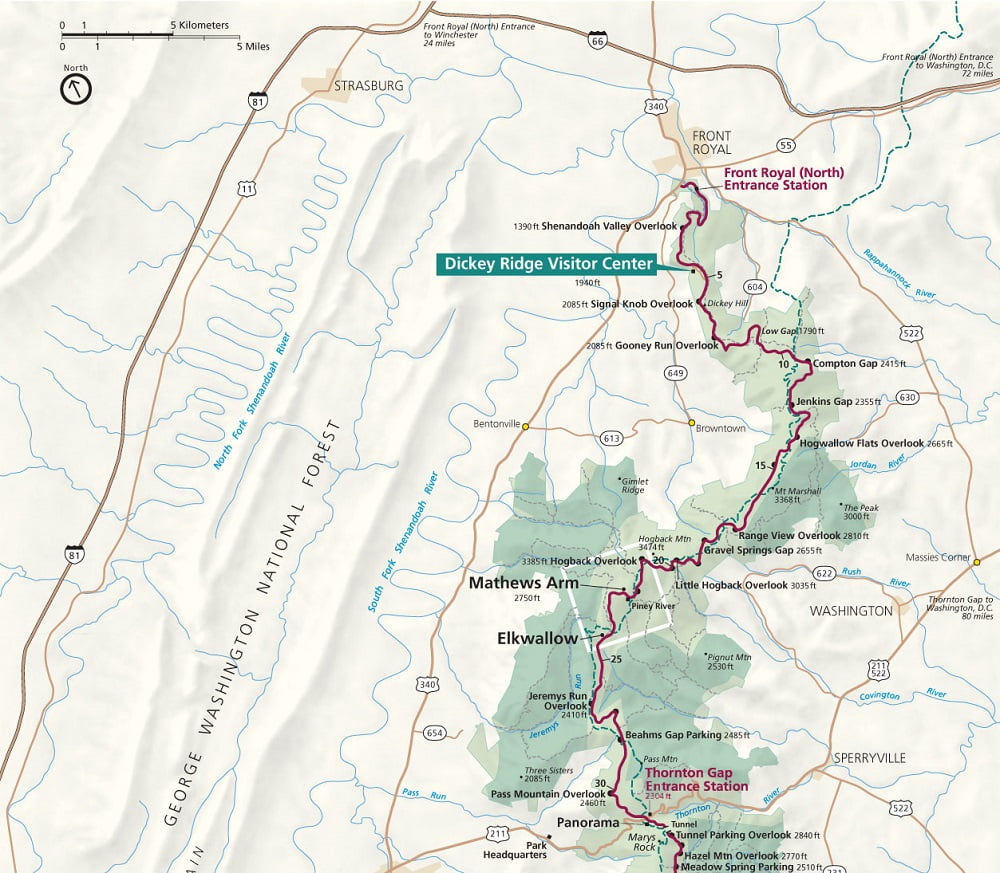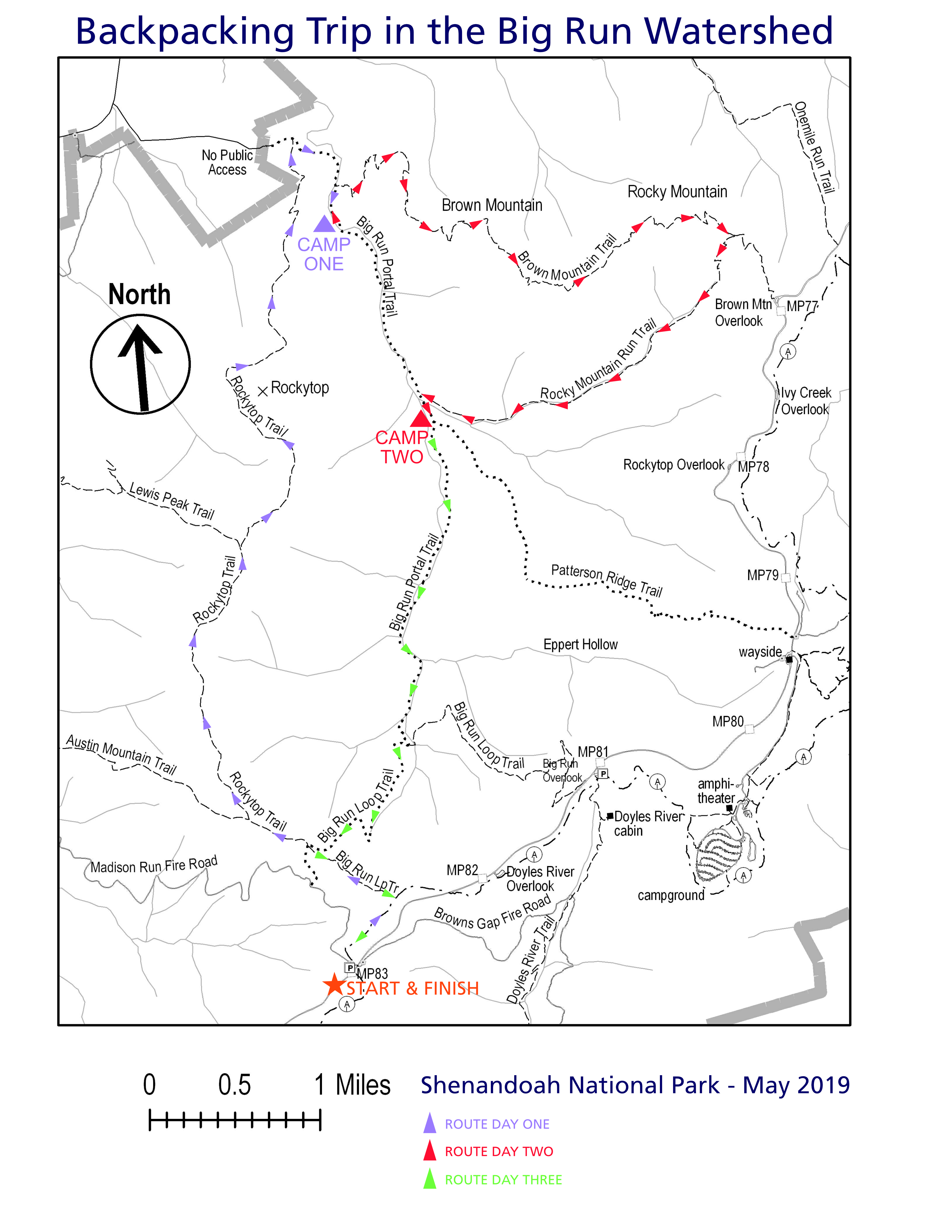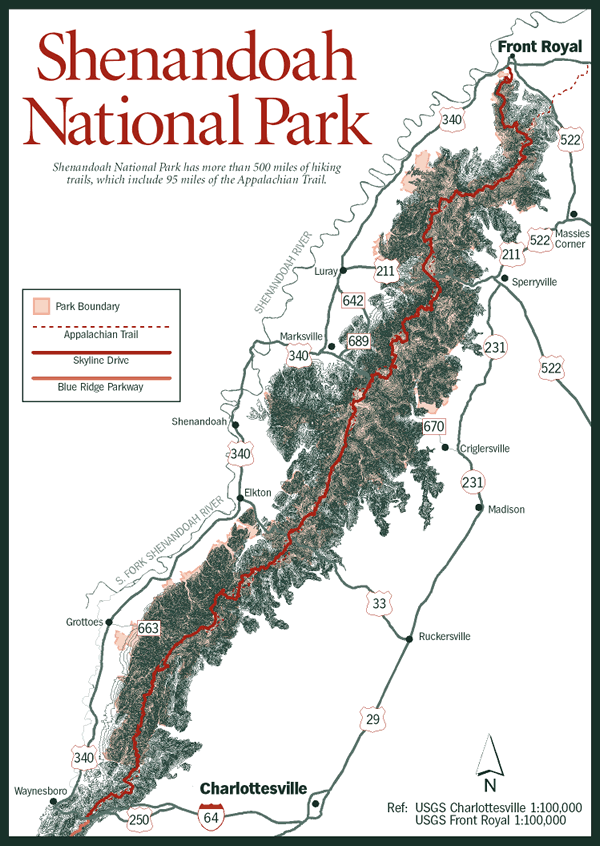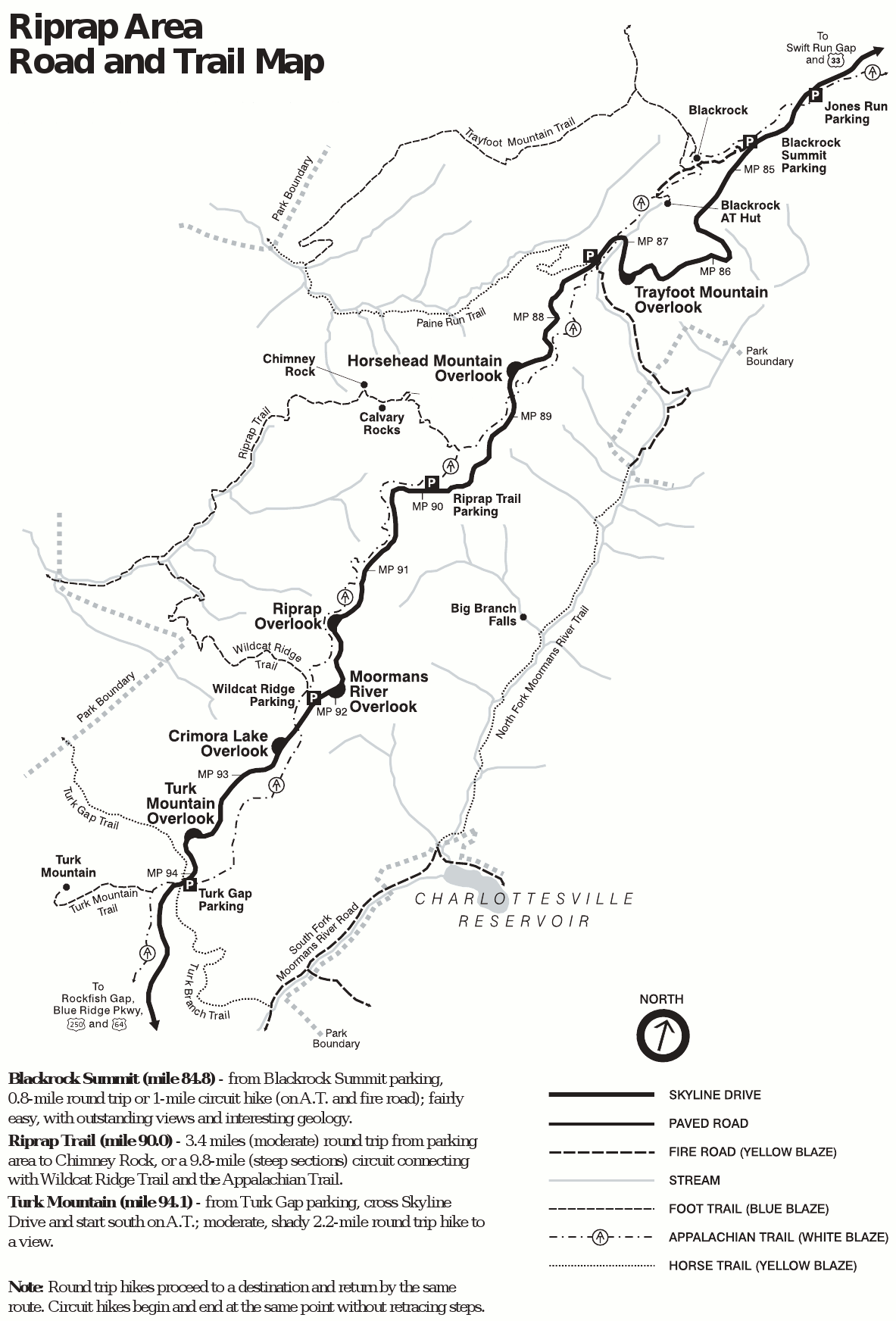Navigating Shenandoah National Park: A Comprehensive Guide to the Trail Map
Related Articles: Navigating Shenandoah National Park: A Comprehensive Guide to the Trail Map
Introduction
In this auspicious occasion, we are delighted to delve into the intriguing topic related to Navigating Shenandoah National Park: A Comprehensive Guide to the Trail Map. Let’s weave interesting information and offer fresh perspectives to the readers.
Table of Content
Navigating Shenandoah National Park: A Comprehensive Guide to the Trail Map

Shenandoah National Park, a breathtaking expanse of rugged mountains, cascading waterfalls, and lush forests, offers an unparalleled outdoor experience. To fully appreciate its beauty and immerse oneself in its natural wonders, a thorough understanding of the park’s trail system is crucial. This is where the Shenandoah National Park Trail Map becomes an indispensable tool, guiding visitors through a network of hiking paths that cater to diverse interests and abilities.
Decoding the Trail Map: A Key to Exploration
The Shenandoah National Park Trail Map is a comprehensive guide to the park’s extensive trail network. Printed versions are available at park visitor centers, and digital versions can be accessed online. The map provides a detailed overview of:
- Trail Locations: The map clearly depicts the location of each trail within the park, including its proximity to major roads, parking areas, and visitor centers.
- Trail Lengths: The map indicates the distance of each trail, allowing visitors to plan their hikes based on their desired duration and fitness level.
- Trail Difficulty: The map assigns difficulty ratings to trails, using color-coded systems or symbols to represent easy, moderate, and challenging routes. This helps hikers choose trails appropriate for their abilities and experience.
- Trail Features: The map highlights key features along each trail, such as scenic overlooks, waterfalls, historical sites, and points of interest. This enables hikers to identify trails that offer specific experiences or attractions.
- Elevation Gain: The map indicates the elevation gain or loss along each trail, providing valuable information for hikers planning strenuous ascents or descents.
- Trail Connections: The map shows how different trails connect, enabling hikers to create multi-day backpacking trips or loop hikes.
Beyond the Map: Additional Resources for Planning
While the trail map is a fundamental resource, it is essential to complement it with additional information to enhance your planning and safety:
- Park Website: The official Shenandoah National Park website provides detailed trail descriptions, current conditions, and safety information. It also offers interactive maps and downloadable guidebooks.
- Ranger Programs: Park rangers offer guided hikes, talks, and workshops that provide valuable insights into the park’s ecology, history, and trail etiquette.
- Trail Guidebooks: Numerous guidebooks dedicated to Shenandoah National Park trails offer comprehensive information on trail descriptions, points of interest, and historical context.
- Trail Conditions: Before embarking on any hike, it is crucial to check trail conditions, especially during the spring and fall seasons. This can be done through the park website, ranger stations, or local hiking groups.
FAQs: Addressing Common Questions
Q: What is the best time to visit Shenandoah National Park?
A: The park is open year-round, but the best time to visit depends on your preferences. Spring offers vibrant wildflowers, while summer brings warm weather and lush greenery. Fall showcases stunning foliage, and winter provides a serene, snow-covered landscape.
Q: Are there any restrictions on trail access?
A: Certain trails may be closed due to weather conditions, construction, or wildlife management. It is essential to check trail closures before setting out on a hike.
Q: What should I bring on a hike in Shenandoah National Park?
A: Essential items include sturdy hiking boots, appropriate clothing for the weather, water, snacks, a map and compass, a first-aid kit, and a headlamp or flashlight.
Q: Are there any designated camping areas in the park?
A: Shenandoah National Park offers backcountry camping opportunities within designated areas. Reservations are required, and campers must adhere to specific regulations.
Q: Are there any specific safety tips for hiking in Shenandoah National Park?
A: Always hike with a buddy, tell someone your plans, stay on designated trails, be aware of wildlife, and carry a whistle or other signaling device.
Tips for Navigating the Trail Map
- Study the Map in Advance: Before visiting the park, take time to familiarize yourself with the trail map and identify trails that align with your interests and abilities.
- Mark Your Route: Use a highlighter or pen to mark your planned route on the map, ensuring you know the trailhead location, connecting trails, and expected landmarks.
- Carry a Copy: Always carry a physical copy of the trail map with you during your hike, even if you have a digital version on your phone.
- Use Landmarks: Utilize landmarks along the trail, such as scenic overlooks, streams, or trail markers, to orient yourself and confirm your location on the map.
- Pay Attention to Signage: The park features numerous trail signs that provide information about trail names, distances, and connecting trails.
Conclusion: Embracing the Trail System
The Shenandoah National Park Trail Map is a valuable tool for exploring the park’s natural beauty and enjoying its diverse hiking experiences. By understanding the map’s features and utilizing it in conjunction with additional resources, visitors can plan safe and fulfilling hikes, immersing themselves in the breathtaking landscapes and rich history of Shenandoah National Park. The trail map serves as a guide, not only through the park’s physical terrain but also through its vibrant ecosystem, providing a window into the wonders that await those who venture into its wilderness.








Closure
Thus, we hope this article has provided valuable insights into Navigating Shenandoah National Park: A Comprehensive Guide to the Trail Map. We hope you find this article informative and beneficial. See you in our next article!